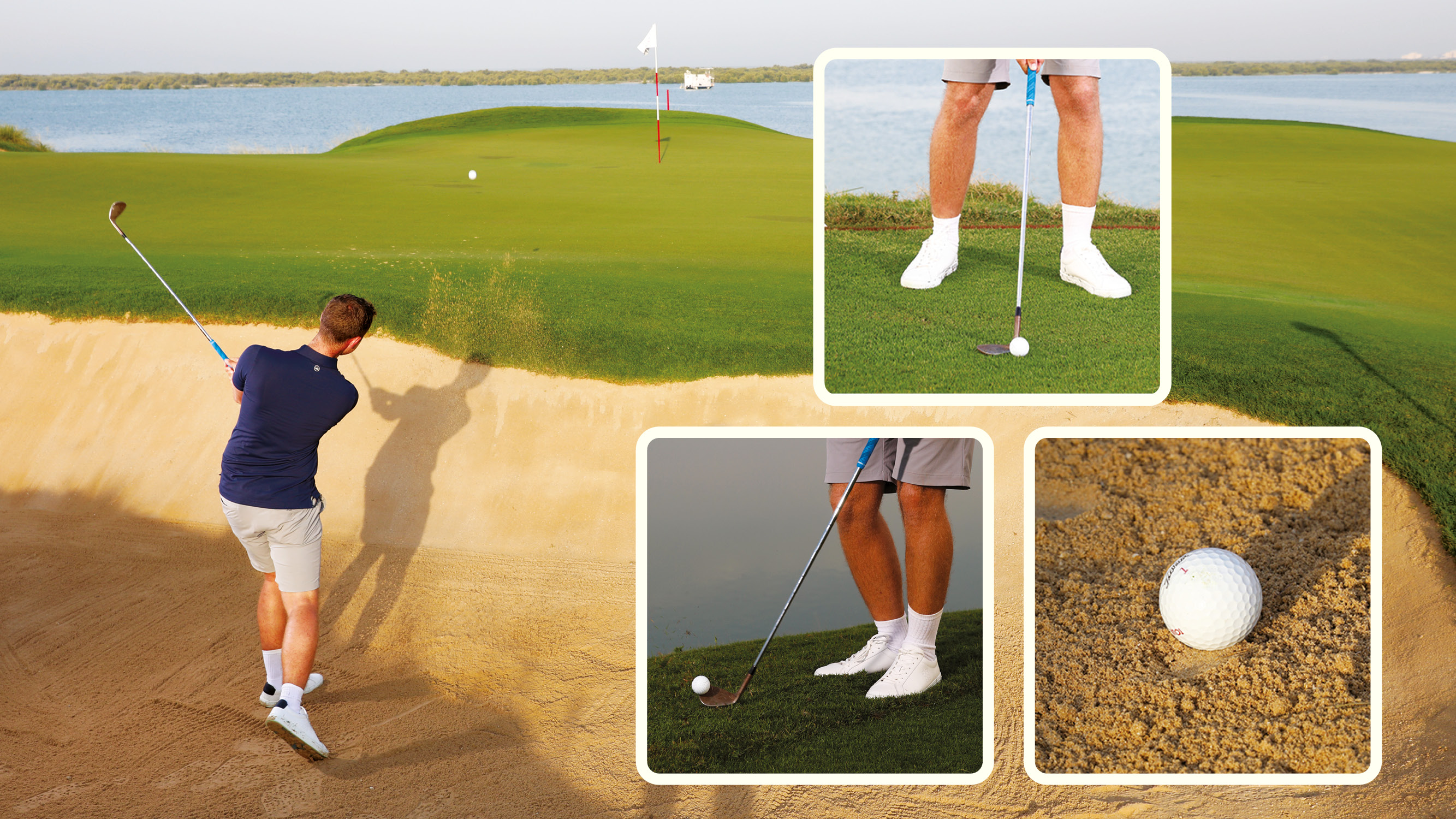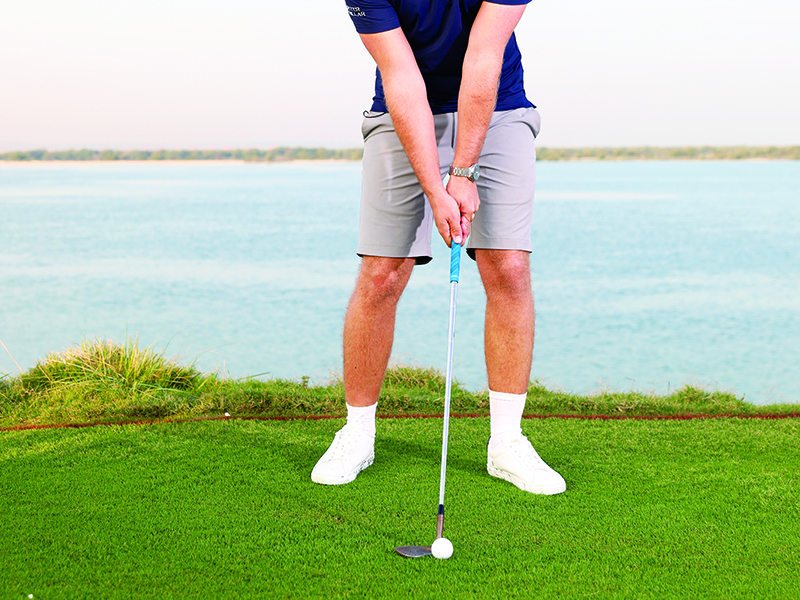I'll Never Fear These Diabolically Difficult Golf Shots Again Thanks To 4 Expert Tips
When you get a dodgy lie or an unlucky break around the green it can be easy to rack up a big number... but not if you utilise these four expert short-game tips

Alex Buckner

Often the best golf tips for improving your short game cover essential fundamentals like how to spin the golf ball or how to hit a pitching wedge, but what do we do when faced with a tricky lie or an unlucky break around the green?
That's where Golf Monthly Top 50 Coach Alex Buckner comes in, as he has created a handy short-game problem solving guide that will help you to escape trouble unscathed and save par more often...
Alex Buckner's Short-Game Problem Solving Guide
Reading a problem is the most undervalued skill around the green. No matter the level of player or your technical skill, if you’re not reading the situation you have to tackle properly, you’re reducing your chances of being able to put it close to the hole.
Being consistent in a variable environment doesn’t equal a consistent outcome – we need to be adaptable. Reading and then adapting appropriately allows problem solving to happen. This is the big separation I see between amateurs and professionals.
1. Ball Sitting Up
Often we treat rough lies all the same, but in reality how the ball sits and the grass around it can really vary, especially when playing abroad (due to different grass types).
When the ball is sitting up, most people read it as a perfect lie and hit as if they were on the fairway. We then all of a sudden hit it high on the face and get the club caught in the rough, which leads to the club slowing down through impact and the ball falling short.

Alex Buckner hitting a chip shot out of thick rough where the ball was previously sitting up
Sitting up in the rough is not the same as the fairway, due to how high the ball is sitting versus where the ground is. We need to match the level of the ball by standing taller and gripping down the club, so we can clip it off the top without the fear of going underneath it.
Subscribe to the Golf Monthly newsletter to stay up to date with all the latest tour news, equipment news, reviews, head-to-heads and buyer’s guides from our team of experienced experts.
2. The Nestled Bunker Lie
We’ve all stepped in a bunker and looked at a lie that seems great, but, for some reason, it just doesn’t look right. The chances are it’s slightly nestled into the sand. From a perfect lie, you can take dead aim and fly it next to the flag with some spin. If it’s not sitting perfectly, you might have to change your strategy.

This golf ball is nestled in the bunker sand, but now we know how to escape thanks to Alex's tips
From this lie (image above), I’m going to have to play for it to roll out. Because of this, not only do I have to change my landing spot, but also where I’m aiming. Eight feet right is just as bad as eight feet short.
If the ball is going to roll, I need to think about my direction. Here, I’ve aimed to land it ten feet left of the hole and 20 feet short, so it rolls up next to the hole for an easy up and down.
3. Short-Sided In The Rough
Let's break this one down into three sections: Lie, face and speed.
At first look, because you’re short-sided, it seems like a delicate shot. The urge would be to swing with a square face and not a lot of clubhead speed to try and catch the ball first.
But the chances of catching the ball first are slim and, if you do, it’s likely to come out too hot for this scenario. We actually want to embrace hitting the rough first on this shot.
However, with little to no clubhead speed and a square face, the chances are the club will tangle in the rough, leading to it slowing down and the ball falling a couple of feet in front of you.

Alex demonstrating an open clubface with a wedge
If you open the face, you are going to be taking away some ball speed. As we are short-sided, this is a benefit. By opening the face, we are also allowing the club to get through the rough more easily as there is less surface area moving through the grass. This will mean a more repeatable impact zone and will take away the fear of the club snagging.
To get through the rough, speed is our friend. Luckily, we can now be more aggressive and hit the ball pretty hard without the risk of it going too far. This is because we’ve accepted an unclean contact and an open face, which is perfect for a short-sided shot from the rough.
4. The Flop Shot
The goal is to hit it high without a lot of ball speed. This is a tough combination to master, so we need to give ourselves every chance. For the height, we need loft. By spinning the face open, lowering the handle and not having the shaft forward, we can maximise the loft of the club to achieve the highest shot possible.
The next part is to take away the ball speed. Loft is helping this already, but to go a step further, we actually want to hit the ground slightly before the ball. And, if we get the club sliding across it, it allows the ball to roll up the face. You want the ball up in your stance to help hit the ground first.

We all want to be able to play that trademark Phil Mickelson flop shot
To help your club slide along the ground, you want you weight 50/50, so in the downswing you can transfer the 50 per cent on your trail side through the shot. If you lean all your weight on your left side at address, you will probably hit the ball first. What’s more, you won’t be able to transfer any weight, and if you are able to move it anywhere, it can only be backwards.

Baz joined Golf Monthly in January 2024, and now leads the instruction section across all platforms - including print and digital. Working closely with Golf Monthly's Top 50 Coaches, he aims to curate and share useful tips on every aspect of the game - helping amateurs of all abilities to play better golf. Baz also contributes weekly to the features section, sharing his thoughts on the game we love and the topics that matter most. A member at Sand Moor Golf Club in Leeds, he looks forward to getting out on the course at least once a week in the pursuit of a respectable handicap.
Baz is currently playing:
Driver: Benross Delta XT
3-Wood: Benross Delta XT
Hybrid: TaylorMade Stealth 4 Hybrid
Irons: Benross Delta XT 5-PW
Wedges: TaylorMade RAC 60, Callaway Jaws MD5 54
Putter: TaylorMade Spider Tour
- Alex BucknerTop 50 Coach